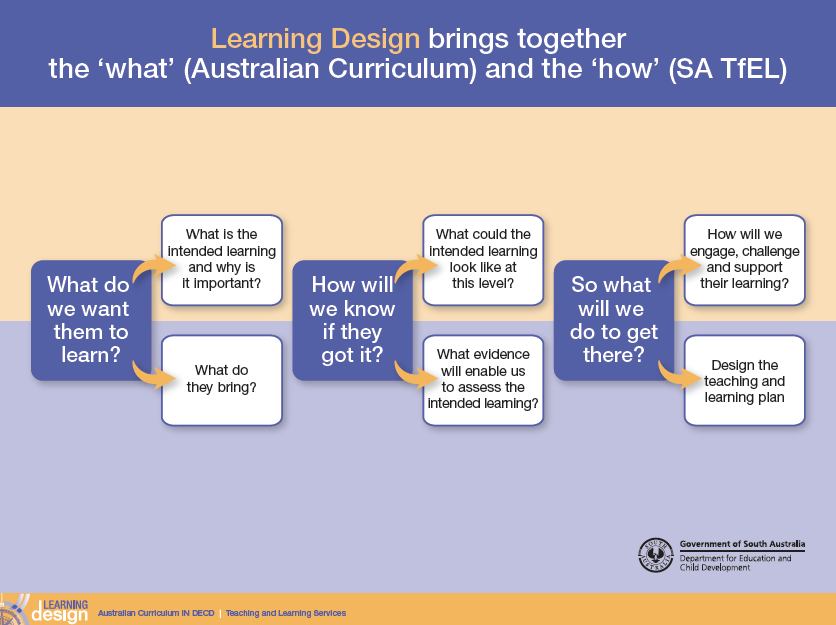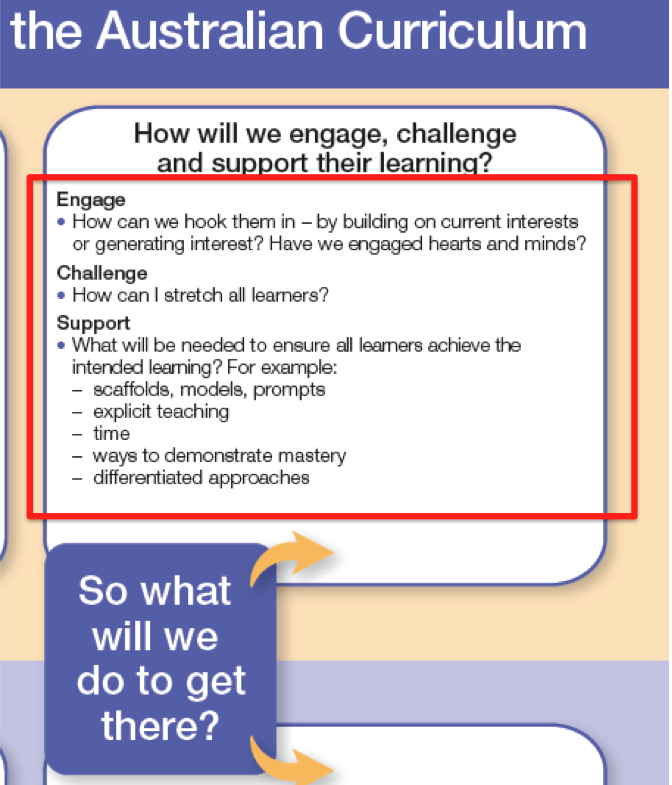
How we design our assessment tasks determines the quality of information we get back from our students. In turn, this impacts on how well we can then move our students forward and assess and report on student achievement to parents. Planning for assessment of and for student learning is a key part of the Learning Design process.
Learning Design

When planning for assessment of and for learning we need to consider what strategies we will use to allow students to demonstrate their learning.

Note: Formative assessment (assessment for learning) is any assessment used at the beginning of and during instruction to check student understanding with the purpose of moving students learning forward. Formative assessment includes self assessment and peer assessment practices. Summative assessment is any assesment that is used to make a final judgement or assign a grade for the purpose of reporting student performance to parents.
We need to ensure that our formative and summative assessment tasks:
- Allow us to identify the next step in the learning process.
- Allow students to present learning in different ways.
- Allow students to present their learning in a way that supports them. For example, a drawing, video or audio explanation may be more appropriate than a written explanation for a student with low-level writing skills.
- Directly connect with the verbs in the achievement standard. For example, if students are required to “identify and select a range of sources” then the task must provide the opportunity to do this.
- Allow students to achieve the Standard at an ABOVE level (A or B grade). Closed tasks, like T or F and multiple choice, may be appropriate at times but can limit students ability to deeply explain concepts and show learning at a higher level.
- Engage students through connections with their own lives and interests where possible (easier said than done).
- Challenge students to not just find and repeat facts but to analyse, debate, create, evaluate and apply their knowledge to demonstrate understanding.

Finally, the support we provide students to apply their knowledge and understanding is critical. The environment we create in our classrooms to support student learning goes a long way to determining the depth and level of knowledge students are able to demonstrate.
"The purpose of assessment is to improve learning, inform teaching, help students achieve the highest standards they can and provide meaningful reports on students’achievement." ACT Government Education & Training
To access online professional development in the area of Assessment for Learning click HERE.
Sources
Leading learning – Making the curriculum work for us
ACT Teachers Guide to Assessment

